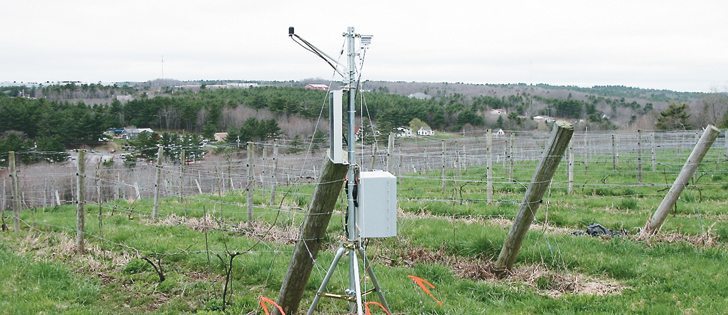LA MALBAIE, Que. — Accurate weather data that targets specific regions has opened up opportunities for new agricultural ventures in southern Nova Scotia.
Chris Atwood, a professional agrologist and executive director of Community Business Development Corporations Yarmouth, said 42 stations were set up to collect information in an area encompassing 250 kilo-metres in southwestern Nova Scotia.
“Having an understanding of that climate, the implications go beyond just agriculture,” he said.
“It’s valuable information that agricultural producers can definitely use and other ventures can take advantage of as well.”
Read Also

Accurate accounting, inventory records are important
Maintaining detailed accounting and inventory records is not just a best practice; it’s a critical component of financial health, operational efficiency and compliance with programs like AgriStability.
Atwood said the region had a history in agriculture, but much of it was lost. The downturn in the province’s fishing industry forced people to seek other ventures.
The initiative, which was funded by business development centres in Yarmouth, Shelburne and Queens Lunenburg, was explained at the Community Futures Network of Canada national conference in La Malbaie, Que., in June.
“The perception is we are a foggy destination, the reality is we’re not,” he said, noting the data proved the region was in fact the sunniest part of the province in 2011-12.
“Southwestern Nova Scotia was really a black zone. We didn’t understand our climate at all.”
Atwood said the area has minimal soils and a unique climate influenced by the moderating effect of the Atlantic Ocean. Further inland, fog and cold are less of an inhibitating factor for agriculture, he said.
“We’ve got climates that are superior in some ways to areas where we traditionally think of agriculture,” said Atwood, citing higher heat units and longer growing seasons.
In future, precipitation and wind information will be collected at the stations, and the data will be available to the public.
The project has led to the developmental lender supporting the endeavours of a shitake mushroom grower, a strawberry producer and a squash grower. There are other opportunities to grow blueberries, grapes and biofuels, said Atwood.
For the squash grower, it has meant changing varieties to suit the climate. For the strawberry grower, it means a longer growing season.
“He will be the first in the province to get strawberries and the last in the season as well,” said Atwood.
The Nova Scotia grape growers did something similar for their own industry in the past, which spawned a spike in acreage, he said.
Contact karen.morrison@producer.com















